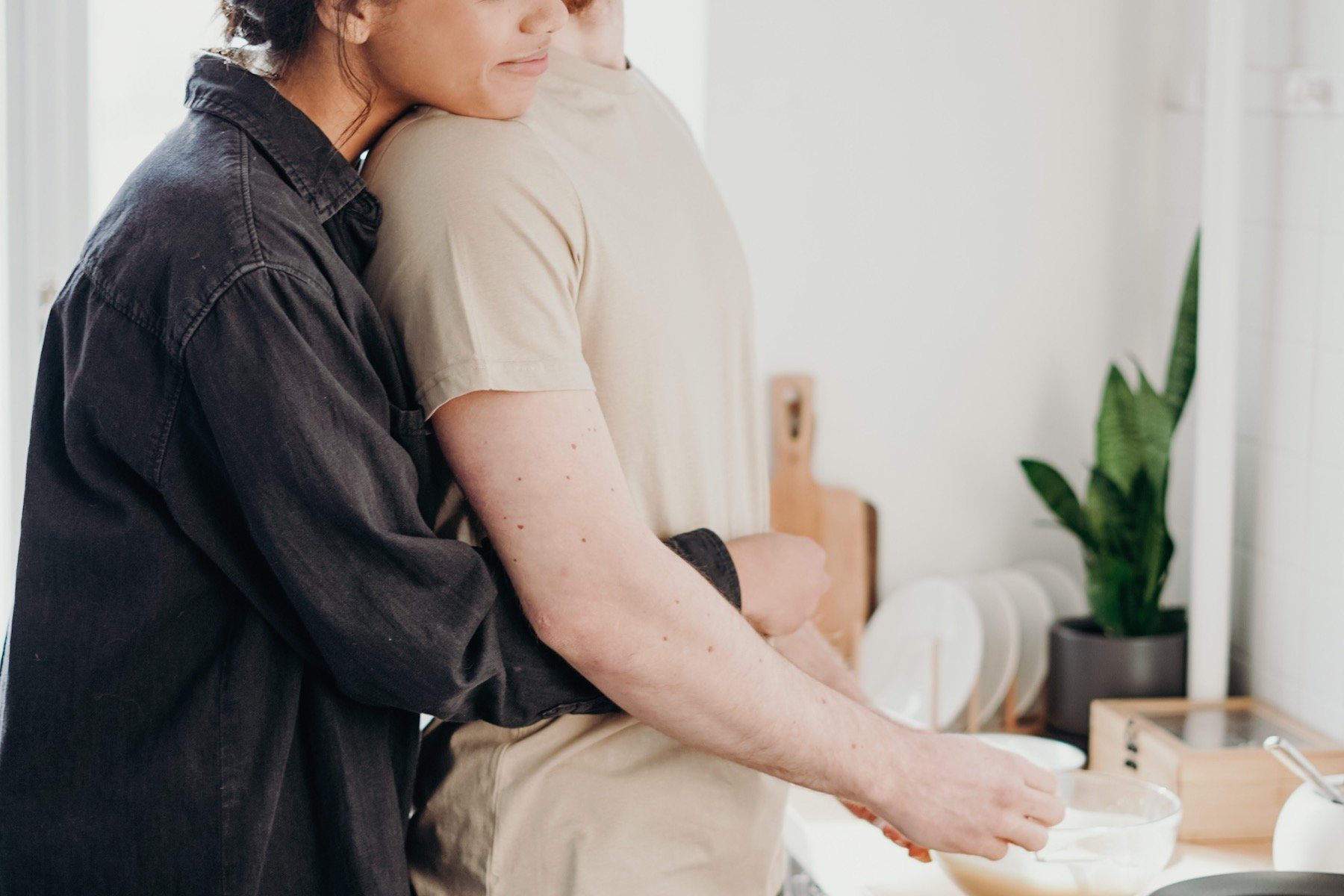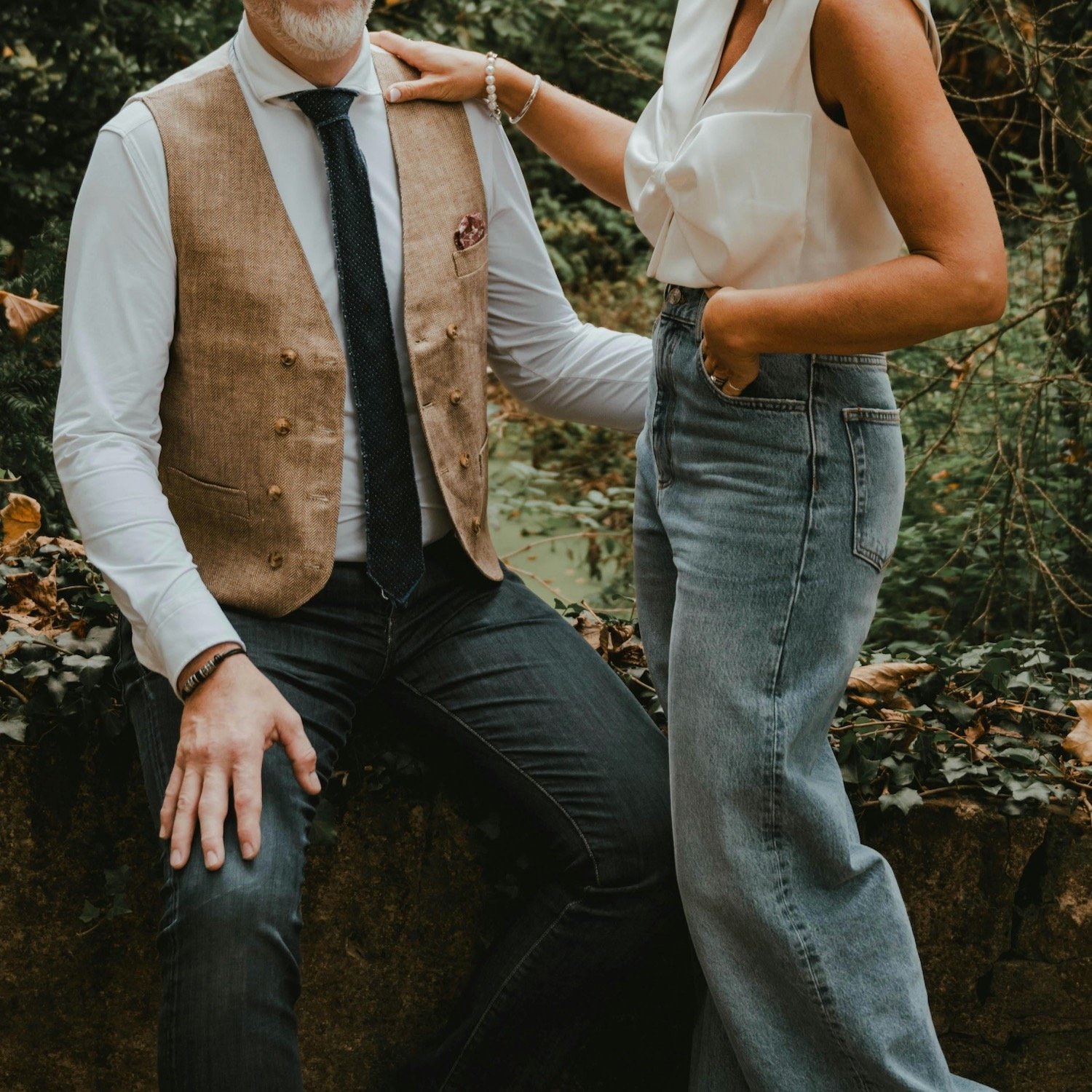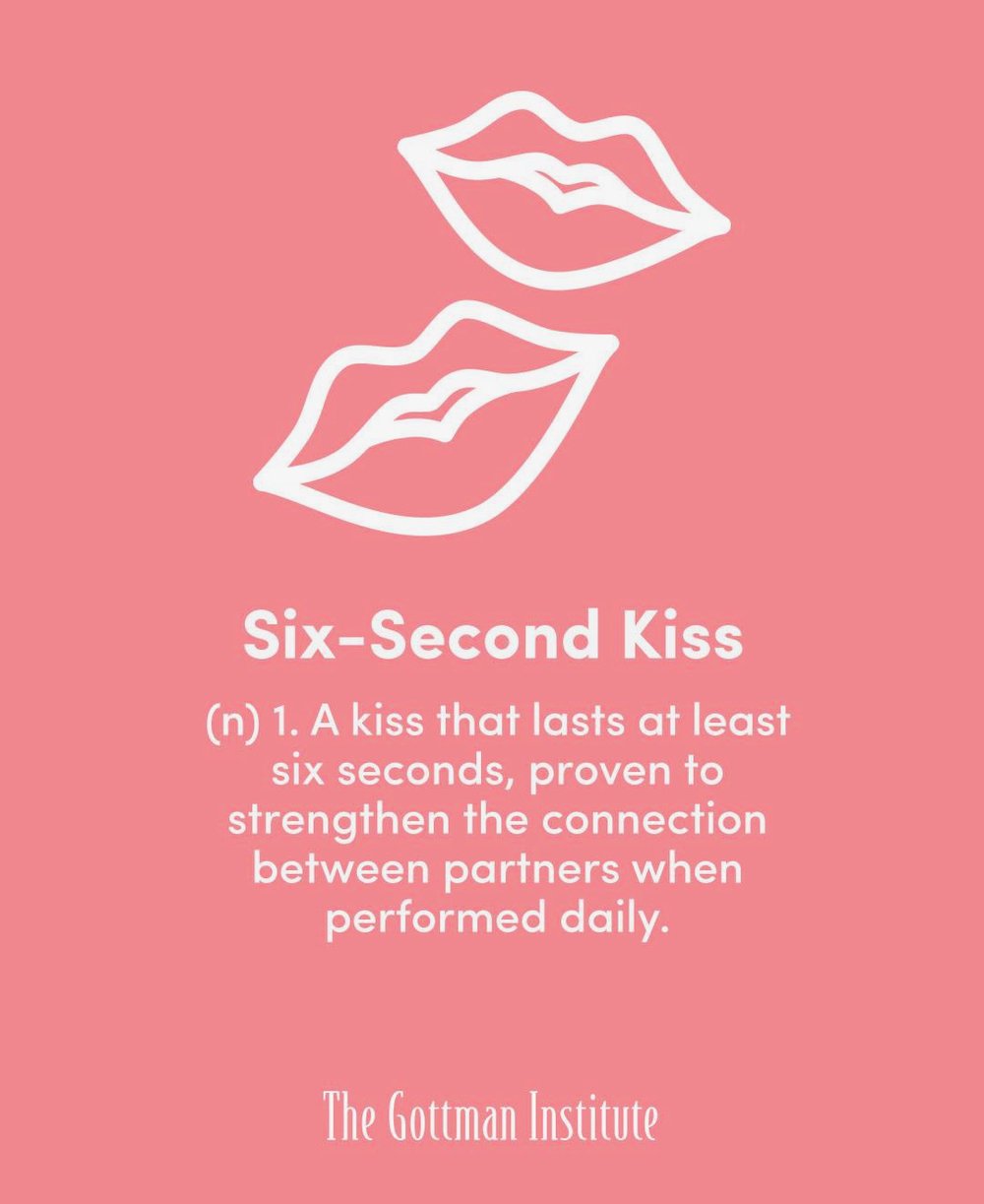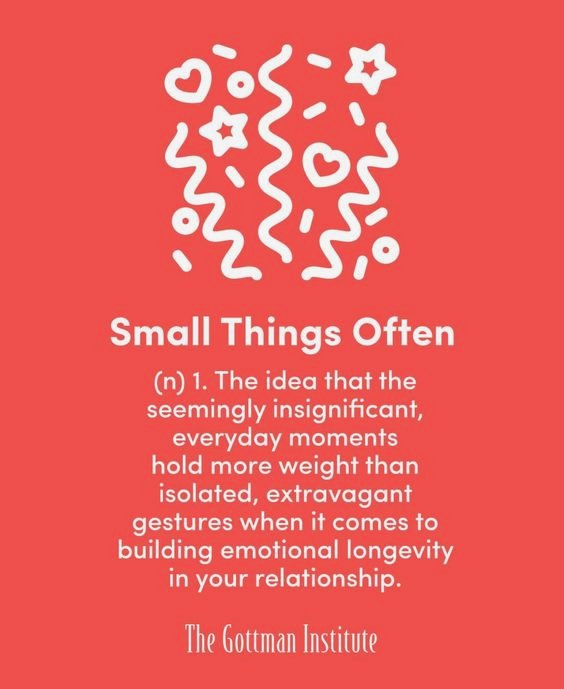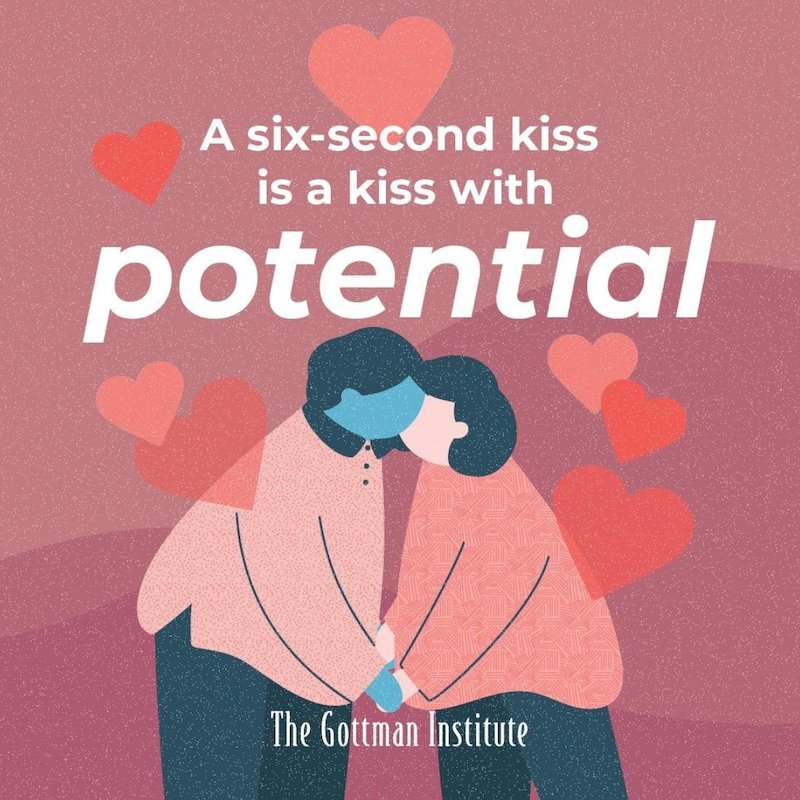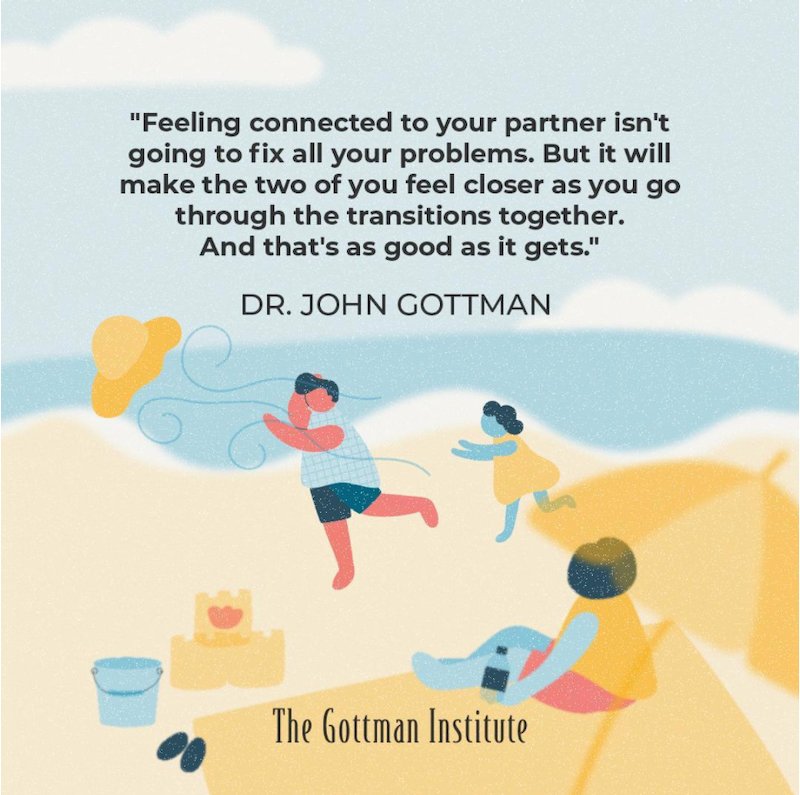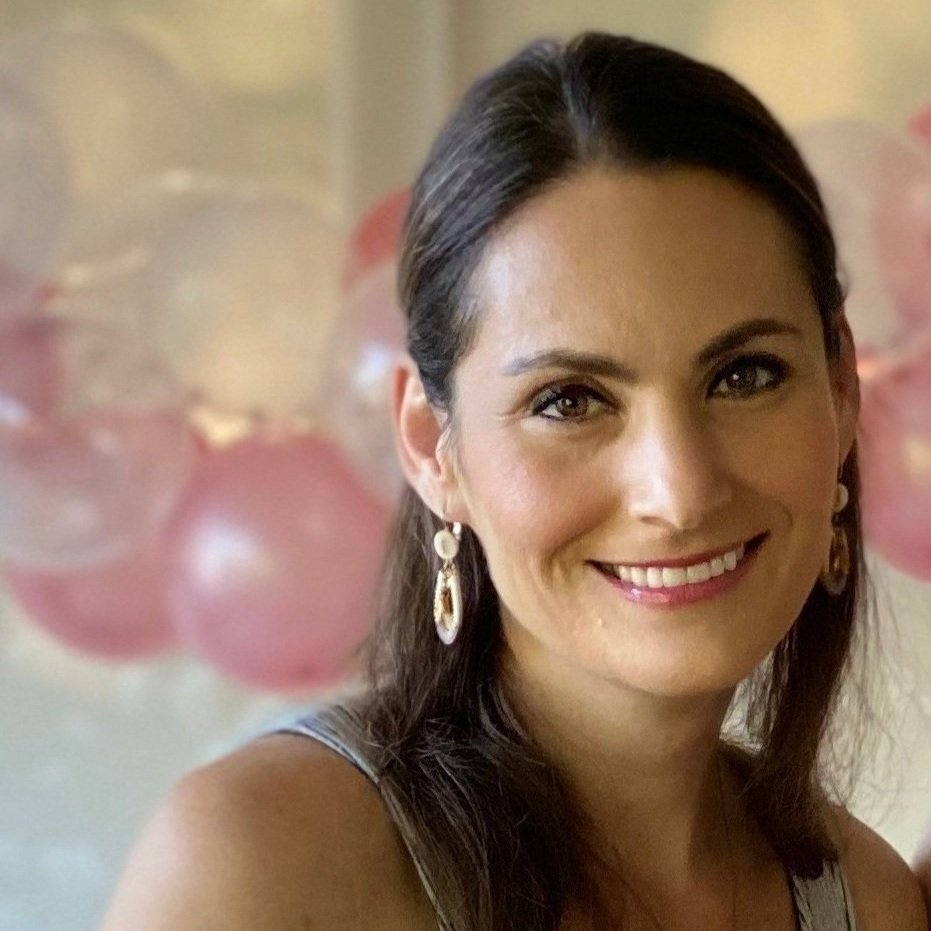This 6-Second Activity Can Completely Transform Your Relationship
by Carolyn Firestone
People really like to say things like “relationships are work.” Or “real change takes time.” And while we’re certainly not here to claim that consistent efforts aren’t important, we will say this:
When it comes to relationships, small things can have a surprisingly ENORMOUS impact.
If you think we’re just saying that to get you to click into another “quick-fix” article with a catchy title, then don’t listen to us. But do listen to acclaimed psychologists John and Julie Gottman, who, alongside their team at The Gottman Institute, have spent the better part of 40 years conducting extensive research on what makes couples experience joyful, lasting relationships.
So…back to that 6-second activity. Have you guessed what it is?
It’s a KISS.
The 6-second kiss is a concept developed by John Gottman as a small, easy exercise for couples to try that actually becomes a powerful tool to connect. But the truly fascinating thing isn’t as much what it is as why it works.
We spoke to Certified Gottman Method Therapist & Consultant Mesha Ellis, Ph.D. all about the mysterious powers of the 6-second kiss. And it turns out, they’re not so mysterious. Rather, it’s an almost scientifically proven way to ignite a remarkable amount of warmth, affection, support, and kindness between a couple.
How it Works:
“A kiss provides a big opportunity to communicate a lot to partners,” said Ellis, who pointed to research showing that kisses can:
Increase motivation
Trigger a sense of euphoria
Influence sexual excitement
Elicit feelings of closeness or attachment
Types of Kisses
Naturally, kisses between a couple can signify or lead to different things at different times. “We have passionate kisses that are romantic. We have kisses that help to move us into sexual engagement. But then, we also have kisses that just communicate affection and approval and that ‘I'm here with you,’” said Ellis. “The six second kiss can be affectionate or it can be passionate.”
In either case, it’s “a basic level of affection” that “provides a gateway to keep passion alive in a relationship,” said Ellis. In fact, there are “a number of messages and neurotransmitters and hormones that can be released as a function of a kiss.”
According to Ellis, some of the rewards of the 6-second kiss include:
The Physical Benefits
Can help reduce stress
Associated with oxytocin “the bonding hormone”
Could prompt the release of dopamine, according to some studies
The Emotional Benefits
Allows couples to “keep in touch with one another” and “check in”
Reaffirms feelings of connectedness by reminding couples: “This is us. This is our relationship. And you are special.”
Creates a ritual that breaks into the practical mode we can fall into and communicates: “We’re in this together. Even though we're busy, we're still connected.”
Provides something that facilitates or contributes to a secure attachment between couples
Sends signals to the other person that we’re excited to see them
Validates the message that we are affirmed, liked, and loved by our partner
Why It Works:
1. It builds meaning over time.
The reason this small connecting act works so well has to do with something John Gottman calls our “emotional bank account,” which Ellis explained as “this repository of experiences that we have with our loved ones in which small deposits can be made.” All the positive habits we engage in with our partner contribute to this “account.”
2. It offsets the effects of negative interactions.
Making a kiss into a habit may seem like a tiny thing, but according to Ellis “we need a lot of small deposits to help guard against negative interactions that are inevitably going to happen in a relationship…It helps to offset any faux pas or any missteps that we may make.”
3. It can lead to “something else.”
A kiss is “a small behavior with a lot of potential,” said Ellis. It can be a warm way to acknowledge your partner, or it can be the thing that ignites a deeper feeling of attraction. “If you kiss long enough, there's a lot that can be triggered.”
4. It reaffirms commitment when couples are struggling.
Even in the tense moments between couples, a kiss can be a way to check in, repair, or reestablish the bigger picture that we care about each other and want to get back to a baseline of feeling close.
So, why 6 seconds?
Apparently, 6 seconds is a sort of sweet spot for couples to be forced to slow down, focus, relax, and recalibrate, but it isn’t so long that couples feel like it’s unrealistic, overwhelming, or forced. Lingering a little lends itself to “settling into this activity and mindfully being present,” said Ellis.
What if it’s hard to do?
“If kissing seems like a real big ask…it may be helpful to have some input from an outside person,” said Ellis. “Because what it may mean is that there's just huge disconnection in that relationship, and they may need some assistance in reconnecting and reestablishing a sense of safety, a sense of communion with one another.”
Still, couples who see this type of kiss as a bit of a challenge shouldn’t necessarily scrap the idea altogether. “Sometimes our emotions follow what we do. And so, if we avoid certain behaviors, then it makes that behavior seem a lot more threatening, a lot bigger than what it really is,” said Ellis.
Ultimately, the 6-second kiss is one element on a long list of short and sweet actions that wind up being what makes up the bulk of a relationship.
John Gottman is famous for pointing to an ideal 5-to-1 ratio, meaning that for every off interaction a couple has, there should be five positive interactions that reaffirm our kind, loving feelings. As Ellis puts it, “It’s not necessarily about the big gestures, it's about the little acts, the gifts that we give to one another, that really helps to set the culture…and gives us that felt sense in the relationship.”
carolyn firestone
Carolyn is the Managing Editor of The Candidly. Her favorite thing to do is to write about her favorite things, especially when they have even the slightest chance of making someone else’s something (mood, relationship, travel plans, or toiletry kit) a little better. You can find more of her articles here.
This article is for informational purposes only. It is not intended to be used in place of professional advice, medical treatment, or professional care in any way. This article is not intended to be and should not be a substitute for professional care, advice or treatment. Please consult with your physician or healthcare provider before changing any health regimen. This article is not intended to diagnose, treat, or prevent disease of any kind. Read our Terms & Conditions and Privacy Policy.

